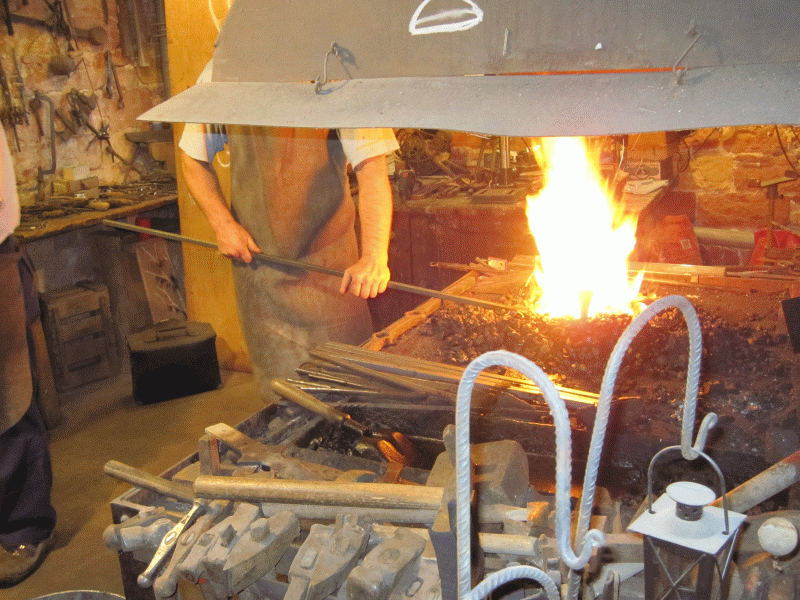Before signing up for a four-day, beginning blacksmithing class at Old West Forge, I called first with some questions.
“I need to learn about 19th century blacksmithing methods–I understand blacksmiths back then used to work with iron, and use a coal-burning forge?”
“We don’t use a power hammer here or anything like that,” Tim Middaugh said. “You’ll learn to forge by hand. But if you’re looking for iron, you’re not gonna find it here. We use steel stock, and propane forges.”
 I went ahead and took the class, and got a lot out of it. And later I was able to see a coal forge in action when I visited Freidelsheim, Germany, so I didn’t feel as if I had lost out.
I went ahead and took the class, and got a lot out of it. And later I was able to see a coal forge in action when I visited Freidelsheim, Germany, so I didn’t feel as if I had lost out.
Still, I’ve always been a bit confused by the idea that wrought iron is no longer available. I ran across the same situation when I talked to Roger Shell at the Camlann Medieval Village about the “living history” blacksmith shop there.
“We’re thinking about forging an anvil,” Roger told me, “the way they were once made in medieval times. Trouble is, we have to wait until we collect enough iron. It’s not available anymore, so we have to get it off old junk, farm tools, that kind of thing.”
When my great-great-grandfather began his apprenticeship in 1857, I’m sure they were working with iron. Up until the end of the 19th century, it was the lifeblood of the blacksmith. Recently, I came across a terrific book called The Blacksmith: Ironworker and Farrier (Aldren A. Watson), about 19th century blacksmithing methods. The first chapter is about wrought iron, with simple and helpful definitions of various types of metal.
“Pure iron as such does not exist in a natural state. Rather, the constituents of iron are trapped in [iron] ore; in order to combine and release them, a smelting process is required. The smelting of iron ore yields a metal which always contains some carbon, the exact amount of which variously influences the characteristics of the finished iron. The more carbon it contains, the harder, more brittle, and more easily fractured it will be. Thus, cast iron is a variant of the metal which has a fairly high carbon content; iron with a moderate amount of carbon is a steel; and an iron with very little carbon in its final composition is wrought iron. … The smelting process used by New England ironmakers was an ancient one. Their wrought iron was still being made in individual, small batches by the direct process–a one-run-at-a-time method that produced blacksmith iron that could not be matched for forging qualities by any other method. This smelting process did not undergo any real change until nearly the end of the nineteenth century.”
A footnote is added, stating that the manufacturing of steel alloys has made wrought iron obsolete ” almost to the point of being a curiosity.”
